Astronautics and testing: mix, but do not shake
Eclectic sometimes interesting. Other people's mistakes are an experience that can be both exciting and rewarding. And finally, recently there have been several cosmic accidents with completely IT reasons. Therefore, I decided to speak at the SQADays 24 testers conference with a story about what testers can learn from astronautics. And since the other activities of the same trip for a separate publication are too small, a vinaigrette from:

Illustration by Alfred Kelsner
The conference was held on November 23-24, and the organizers not only managed to process the video, but also posted it in public access.
In more detail about the given examples in the following publications:
')
The video mentions a report about testing in production, here it is with a Russian translation.
Gojko Adzic won the first place by a large margin in the voting of the conference participants. Besides him, the performances of Michael Pilatein (video not yet published), Alexey Kuznetsov and Daniil Maistrenko were highly appreciated.
Other materials under the spoilers, so that you can determine for yourself what is interesting to you.
- My SQADays report
- The best reports SQADays-24
- Video reconstruction of the accident "Union MS-10" with instructions on how to repeat it at home
- Some photos of the pavilion "Cosmos" at VDNH
- Visit to Laba.Space, where the 435nm project is located

Illustration by Alfred Kelsner
SQADays
The conference was held on November 23-24, and the organizers not only managed to process the video, but also posted it in public access.
In more detail about the given examples in the following publications:
')
- Ariane 5 crash
- Accident of the upper unit "Frigate"
- Disasters "Challenger" and "Union-1"
- All my publications about cosmic incidents
The video mentions a report about testing in production, here it is with a Russian translation.
Gojko Adzic won the first place by a large margin in the voting of the conference participants. Besides him, the performances of Michael Pilatein (video not yet published), Alexey Kuznetsov and Daniil Maistrenko were highly appreciated.
Other materials under the spoilers, so that you can determine for yourself what is interesting to you.
The work of emergency rescue systems with illustrations from the Orbiter
On the evening of November 24, at the Museum of Cosmonautics, I talked about emergency rescue systems with illustrations from the Orbiter space simulator. Video link .
Orbiter is available for free, you can install add-ons and see the crash scripts shown.
The cause of the accident "Union MS-10."
Orbiter is available for free, you can install add-ons and see the crash scripts shown.
The cause of the accident "Union MS-10."
Walk on the pavilion 'Space' ENEA
It happened by chance that the last time I ended up in Moscow just a day before the official opening of the restored pavilion "Cosmos", so now, naturally, I decided to spend a free evening to go there. On Habré there is a report from the month of April, so you can see what has changed in six months.
General view of the pavilion from the entrance.
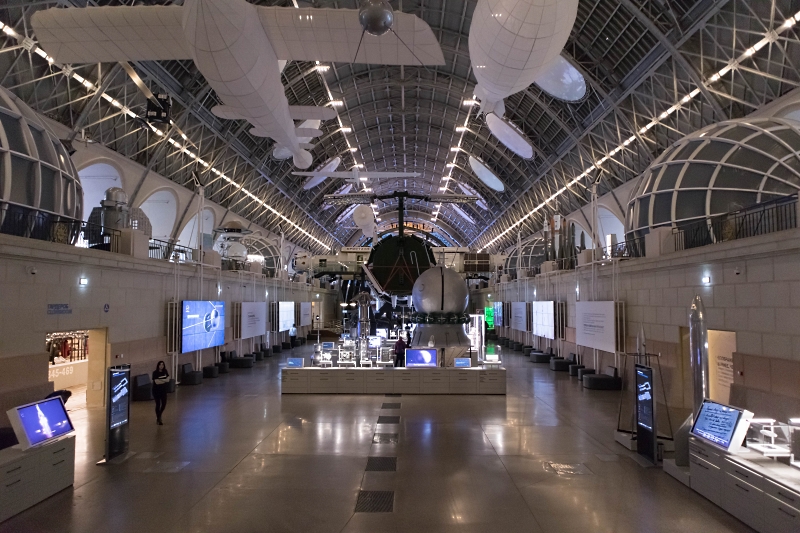
The dawn of the Soviet cosmonautics - GIRD missiles and the first engines.

A rarer exhibit is the payload of a suborbital geophysical rocket. Climbed into space for a few minutes.
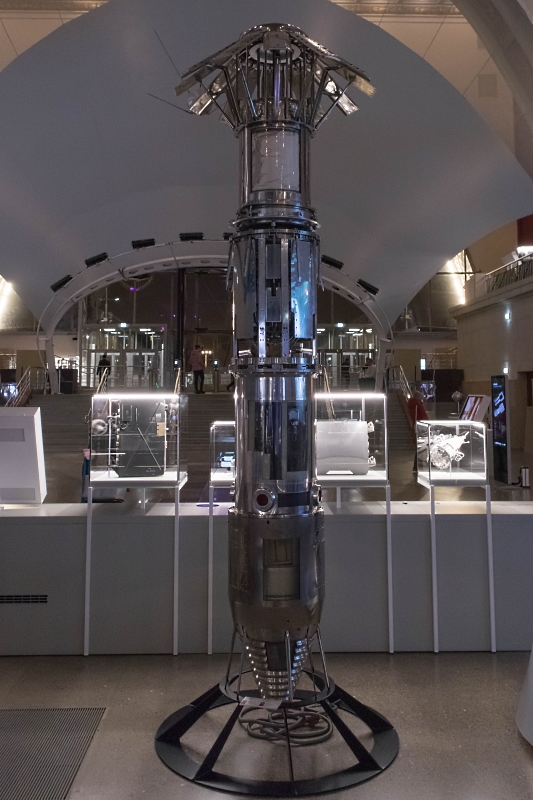
The pavilion was created with the participation of the Polytechnic Museum, the strength of which are interactive stands, here they also exist, and of very good quality. This is the “prepare to go into space” quest, which is rather long and complicated.
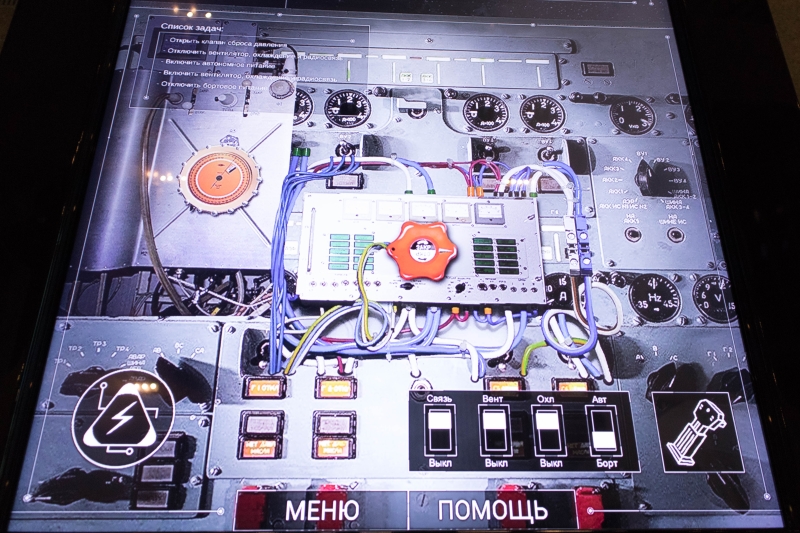
And this is almost a real space simulator. Moving forward is automatic, but the roll and offset along two axes must be controlled independently. Great stand!
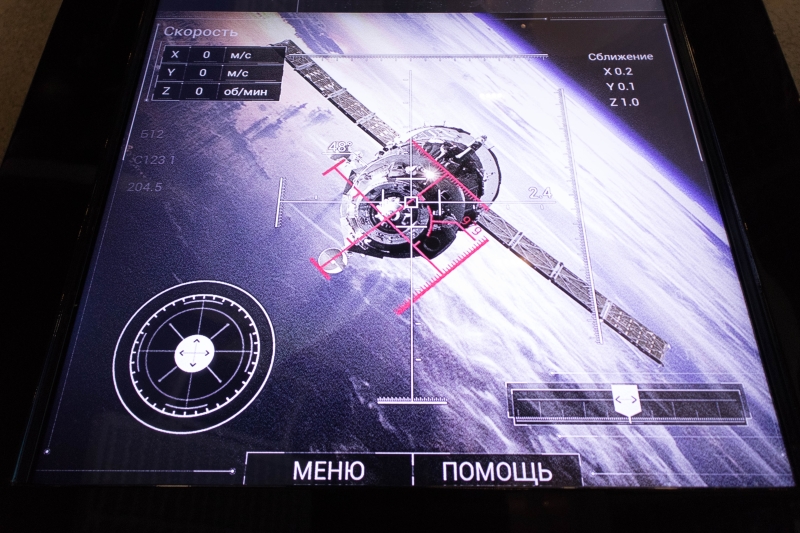
But the idea with the exhibits in the drawers I did not really like. Children may be curious, but the need to constantly push and pull drawers personally quickly began to annoy me. Plus, they are slowly starting to get loose, I'm afraid it will be worse.
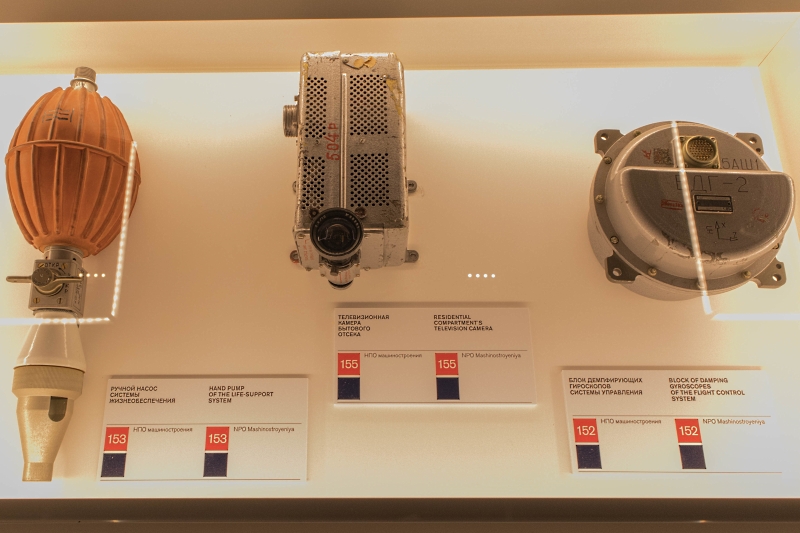
A very relevant exhibit is the mast of the emergency rescue system.
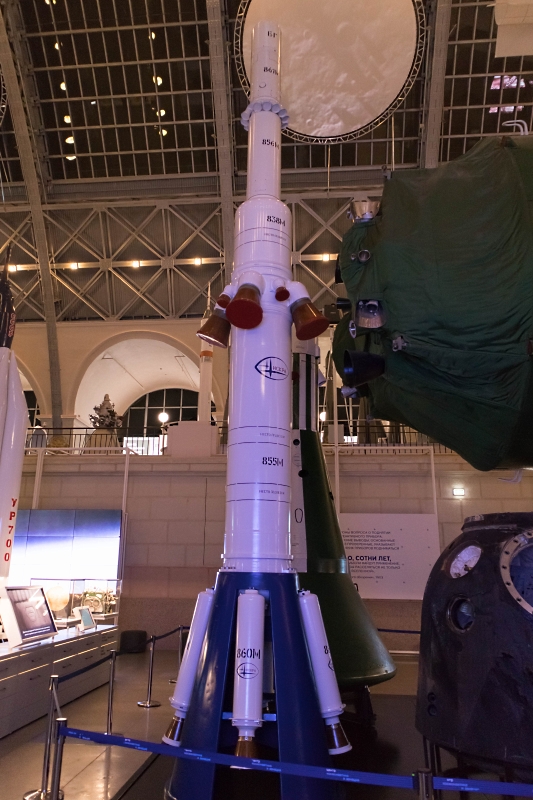
Around the middle of the hall, the engines NK-43 and NK-33.

Side hall, very conceptual huge astronaut. For some reason, I remember a giant child from Solaris, which is not very pleasant.
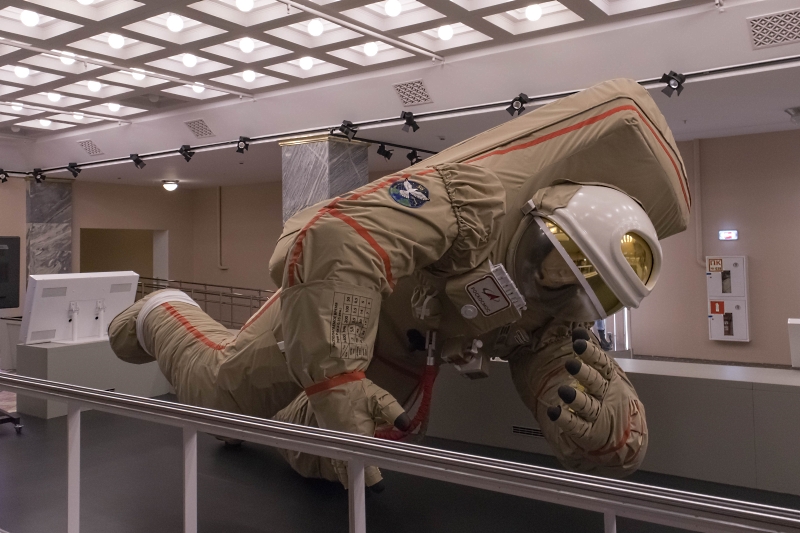
Top of the far side of the room. Satellites, right GLONASS-K.
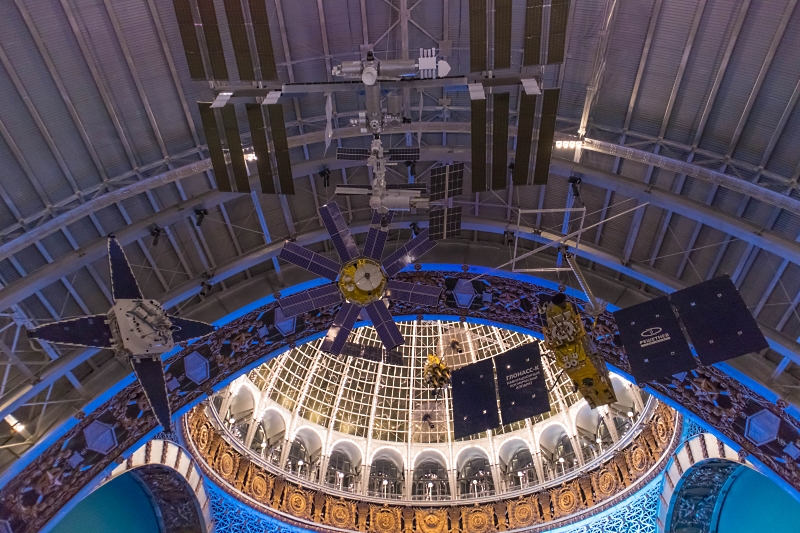
Layout MCC, an interesting idea.
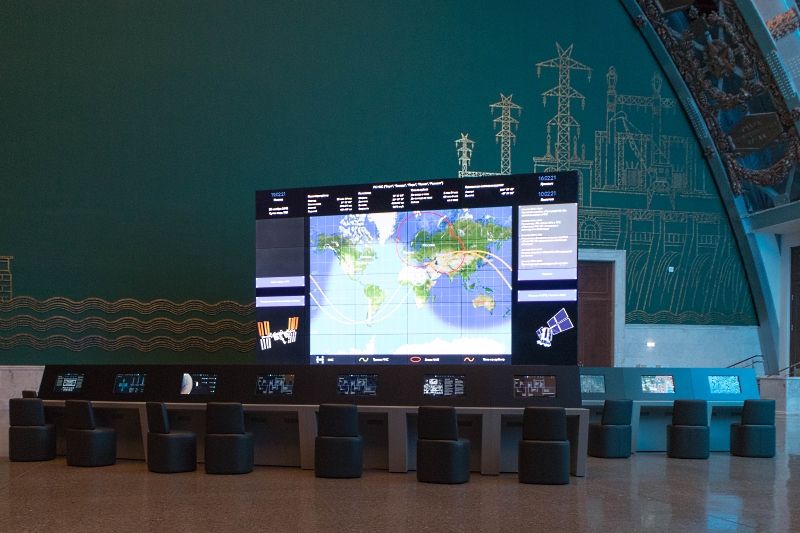
The restored dome in the far part of the hall is very beautiful.
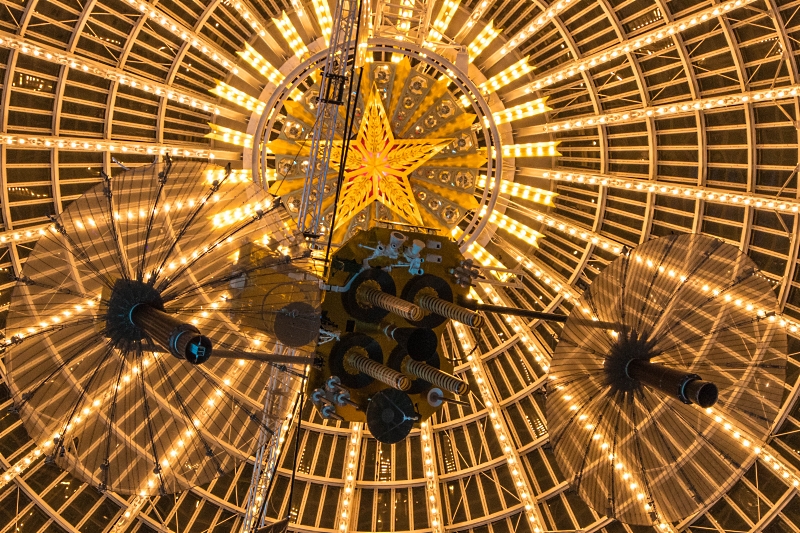
"And the whole world is not enough".

Robot Fedor. That's right, let it be not only history, but also structures that have not yet managed to fly. Photos from the side, because in front of him a constant line of people willing to talk.

View from the far end of the hall towards the entrance.
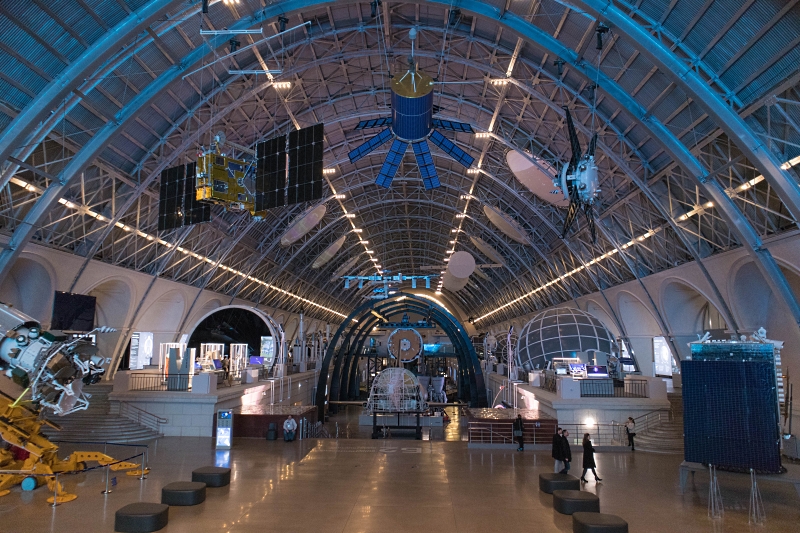
On a dais fantastic pictures and acting ion engines. You can't take it from me!

On the left of the entrance are historical spacecraft - "Mars", "Venus", "Lunokhod".

On the right hand spacesuit ...
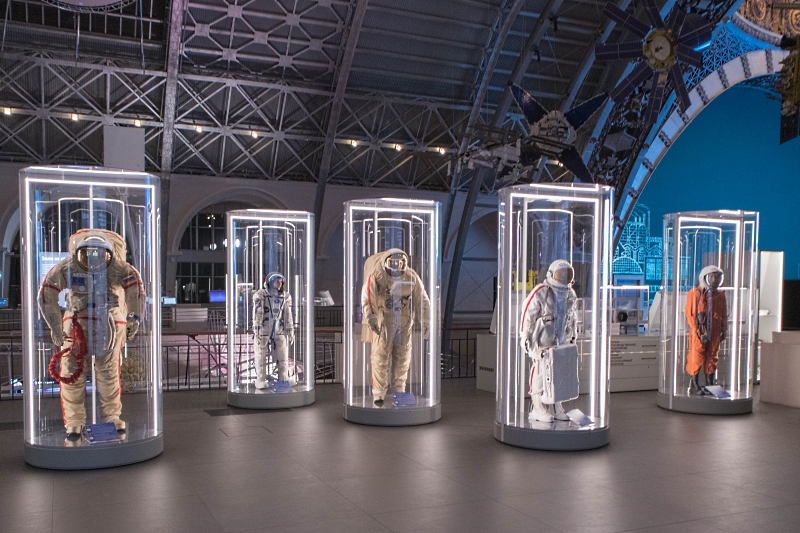
And rockets. Family "Angara".
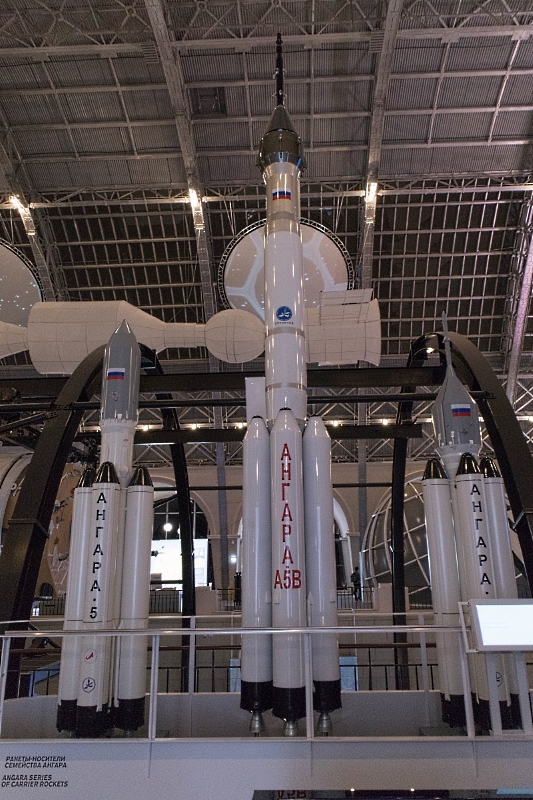
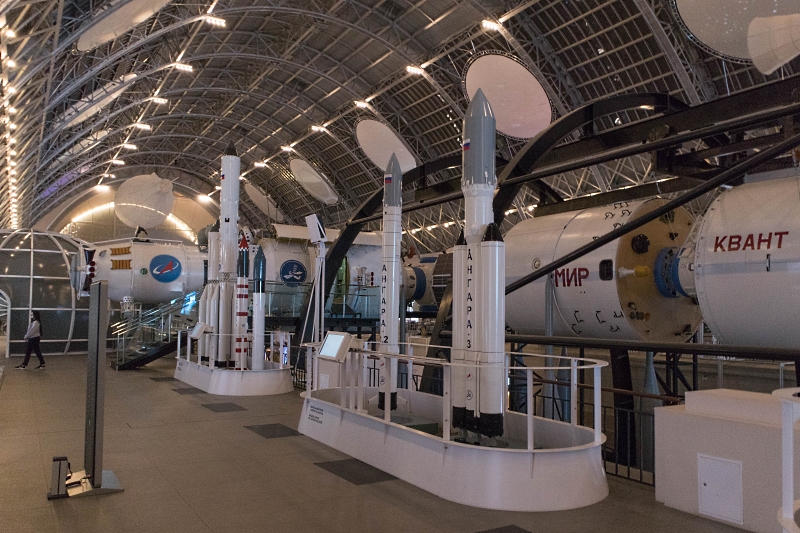
And the legendary family of "sevens" from the ballistic "R-7" to, suddenly, "Union-5".
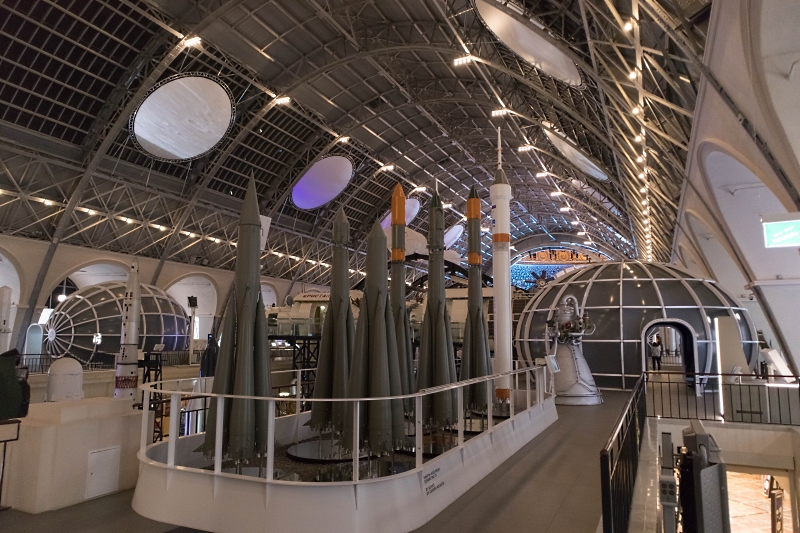
The fact that the pavilion is open not so long ago still makes itself felt. This is the most outrageous mistake that has not yet been corrected. Wrong signatures from "Angara" and "Soyuzov", while curiously, the paint was written correctly, "carrier rockets".

I went to the caretakers, asking if they often complain about this mistake. The answer is that yes, and that it is not the only one. A whole commission arrived, made a list, but the inaccuracies have not yet been fixed. Still, they say, on the left there is a mock-up of Lunokhod-2 with a sign Lunokhod-1. Well, let's hope that the errors are corrected.
In general, I liked the pavilion, VDNH now became the most museum-space site of the country, do not be lazy, take a walk around the Museum of Cosmonautics, and the pavilion "Cosmos".
General view of the pavilion from the entrance.

The dawn of the Soviet cosmonautics - GIRD missiles and the first engines.

A rarer exhibit is the payload of a suborbital geophysical rocket. Climbed into space for a few minutes.

The pavilion was created with the participation of the Polytechnic Museum, the strength of which are interactive stands, here they also exist, and of very good quality. This is the “prepare to go into space” quest, which is rather long and complicated.

And this is almost a real space simulator. Moving forward is automatic, but the roll and offset along two axes must be controlled independently. Great stand!

But the idea with the exhibits in the drawers I did not really like. Children may be curious, but the need to constantly push and pull drawers personally quickly began to annoy me. Plus, they are slowly starting to get loose, I'm afraid it will be worse.

A very relevant exhibit is the mast of the emergency rescue system.

Around the middle of the hall, the engines NK-43 and NK-33.

Side hall, very conceptual huge astronaut. For some reason, I remember a giant child from Solaris, which is not very pleasant.

Top of the far side of the room. Satellites, right GLONASS-K.

Layout MCC, an interesting idea.

The restored dome in the far part of the hall is very beautiful.

"And the whole world is not enough".

Robot Fedor. That's right, let it be not only history, but also structures that have not yet managed to fly. Photos from the side, because in front of him a constant line of people willing to talk.

View from the far end of the hall towards the entrance.

On a dais fantastic pictures and acting ion engines. You can't take it from me!

On the left of the entrance are historical spacecraft - "Mars", "Venus", "Lunokhod".

On the right hand spacesuit ...

And rockets. Family "Angara".


And the legendary family of "sevens" from the ballistic "R-7" to, suddenly, "Union-5".

The fact that the pavilion is open not so long ago still makes itself felt. This is the most outrageous mistake that has not yet been corrected. Wrong signatures from "Angara" and "Soyuzov", while curiously, the paint was written correctly, "carrier rockets".

I went to the caretakers, asking if they often complain about this mistake. The answer is that yes, and that it is not the only one. A whole commission arrived, made a list, but the inaccuracies have not yet been fixed. Still, they say, on the left there is a mock-up of Lunokhod-2 with a sign Lunokhod-1. Well, let's hope that the errors are corrected.
In general, I liked the pavilion, VDNH now became the most museum-space site of the country, do not be lazy, take a walk around the Museum of Cosmonautics, and the pavilion "Cosmos".
Project news 435nm
Alexander Shaenko, who successfully gathered crowdfunding to the Mayak satellite, launched a new 435nm project in the spring. He wants to get a life-support system closed in oxygen. In March, Alexander successfully raised crowdfunding funds for work and was about to set up a “death experiment” in the fall - breathing oxygen that chlorella produces. Alas, as is often the case, the deadlines were estimated too optimistically, and winter is already on the nose, and the experiment will have to wait a long time - chlorella is still growing poorly, and the “iron” is not ready.
This is how the Chlorella test bench looks like so far.

Alexander Shaenko and breathing mask.

The works are carried out in the Laba.Space space, a very geeky place, with an entrance through a rusty fence near a garbage can, a passage through capitally repaired premises and a set of appropriate equipment located in the basement - 3D printers, milling machines, laser cutting machines, and even a pressure chamber, which is why something stubbornly do not want to call a pressure chamber.

Work on the project is underway, so that, if not as soon as we would like, we will most likely see a working reactor that gives oxygen for breathing.
This is how the Chlorella test bench looks like so far.

Alexander Shaenko and breathing mask.

The works are carried out in the Laba.Space space, a very geeky place, with an entrance through a rusty fence near a garbage can, a passage through capitally repaired premises and a set of appropriate equipment located in the basement - 3D printers, milling machines, laser cutting machines, and even a pressure chamber, which is why something stubbornly do not want to call a pressure chamber.

Work on the project is underway, so that, if not as soon as we would like, we will most likely see a working reactor that gives oxygen for breathing.
Source: https://habr.com/ru/post/431584/
All Articles